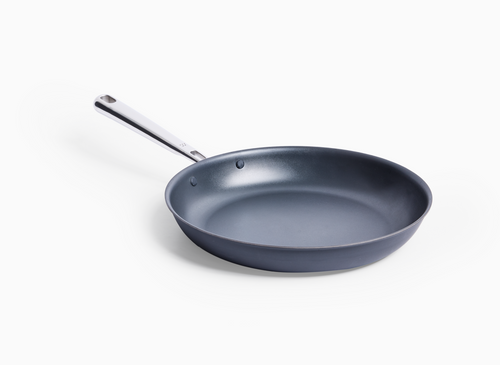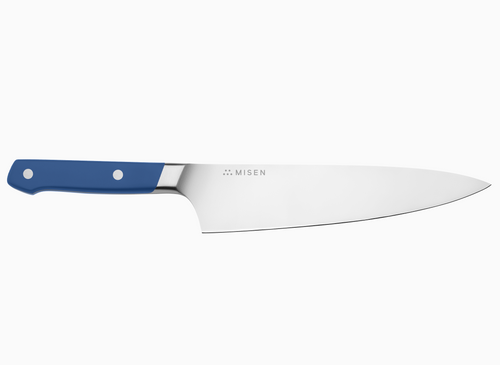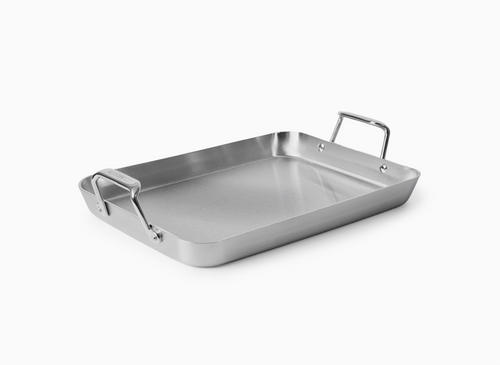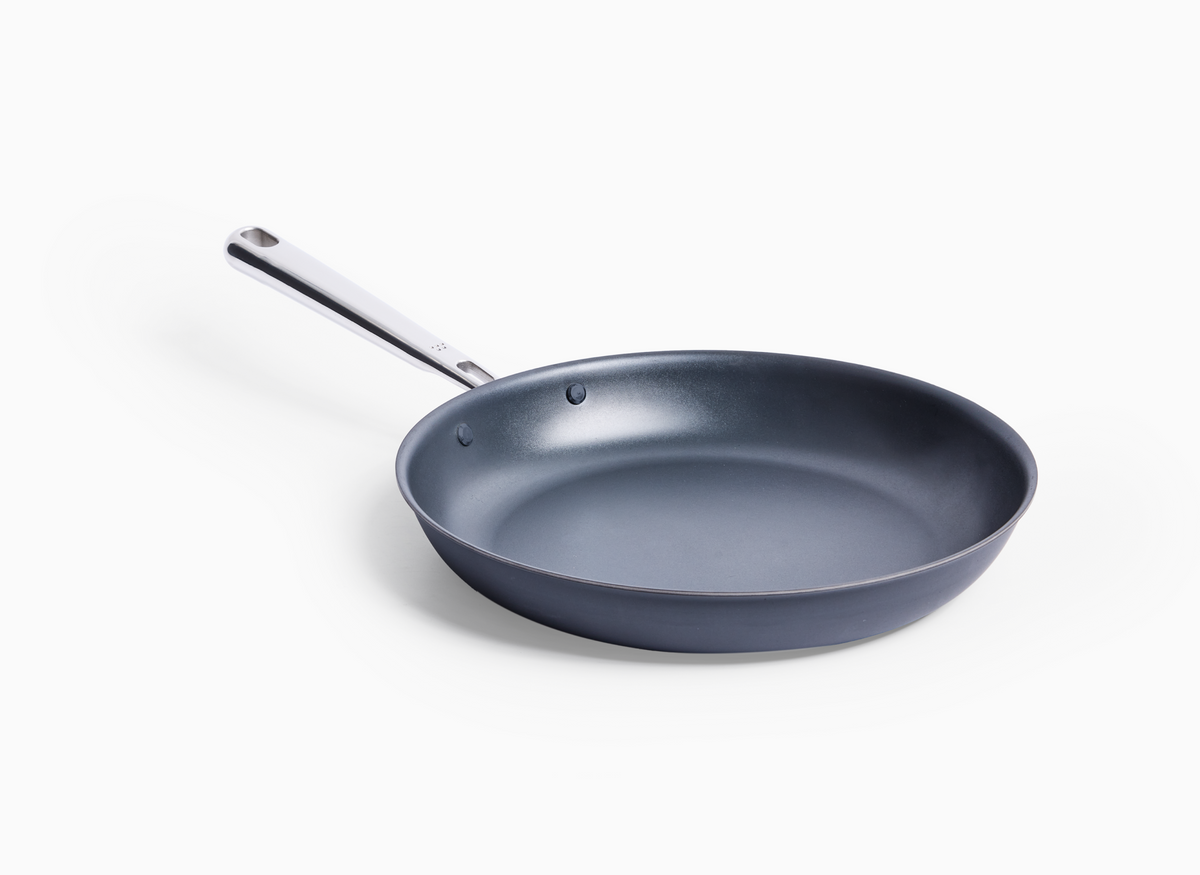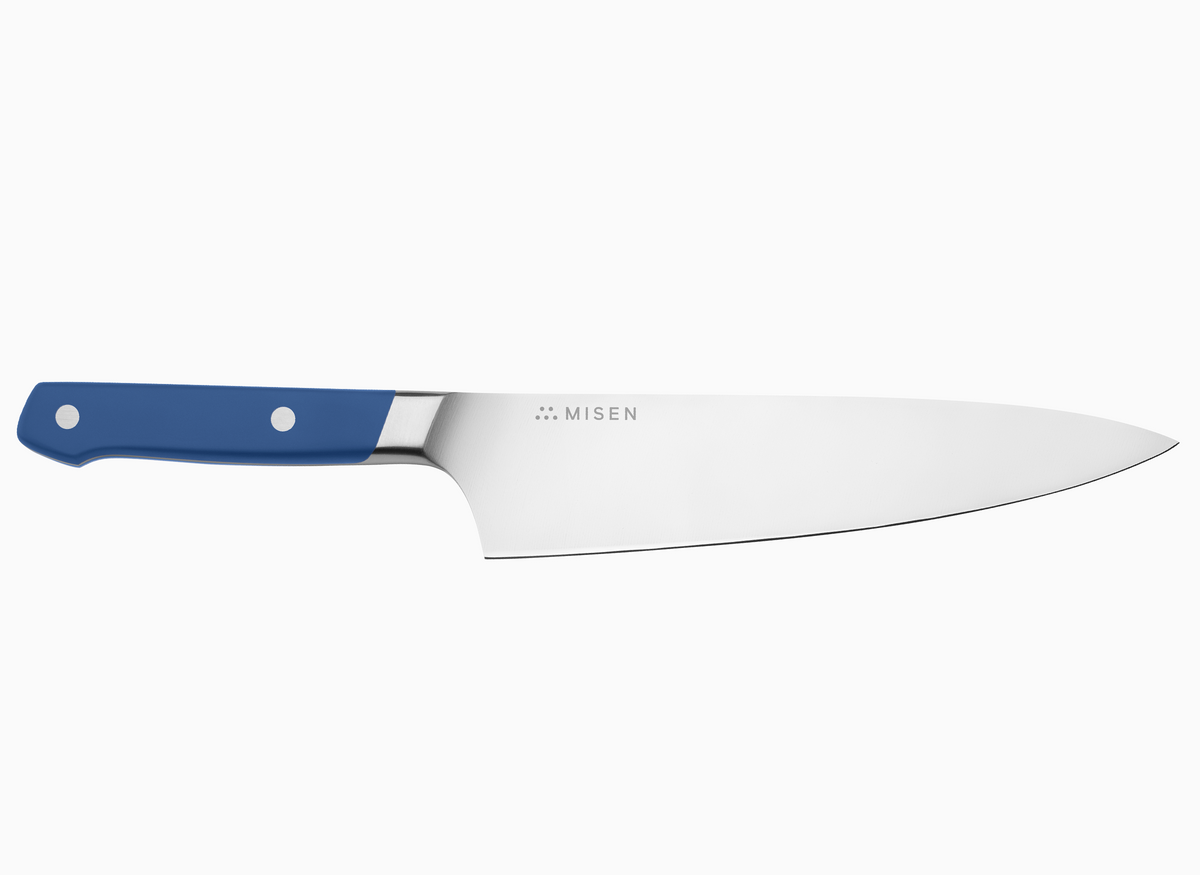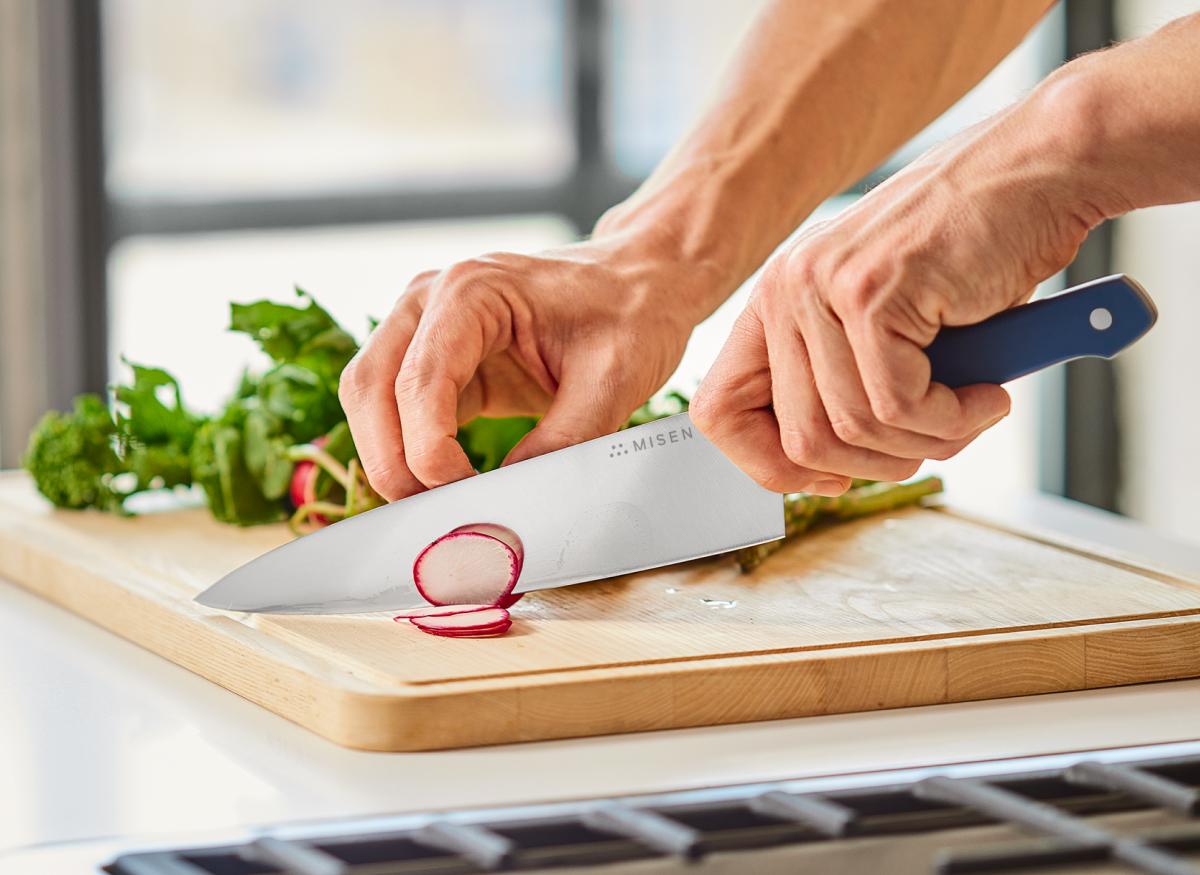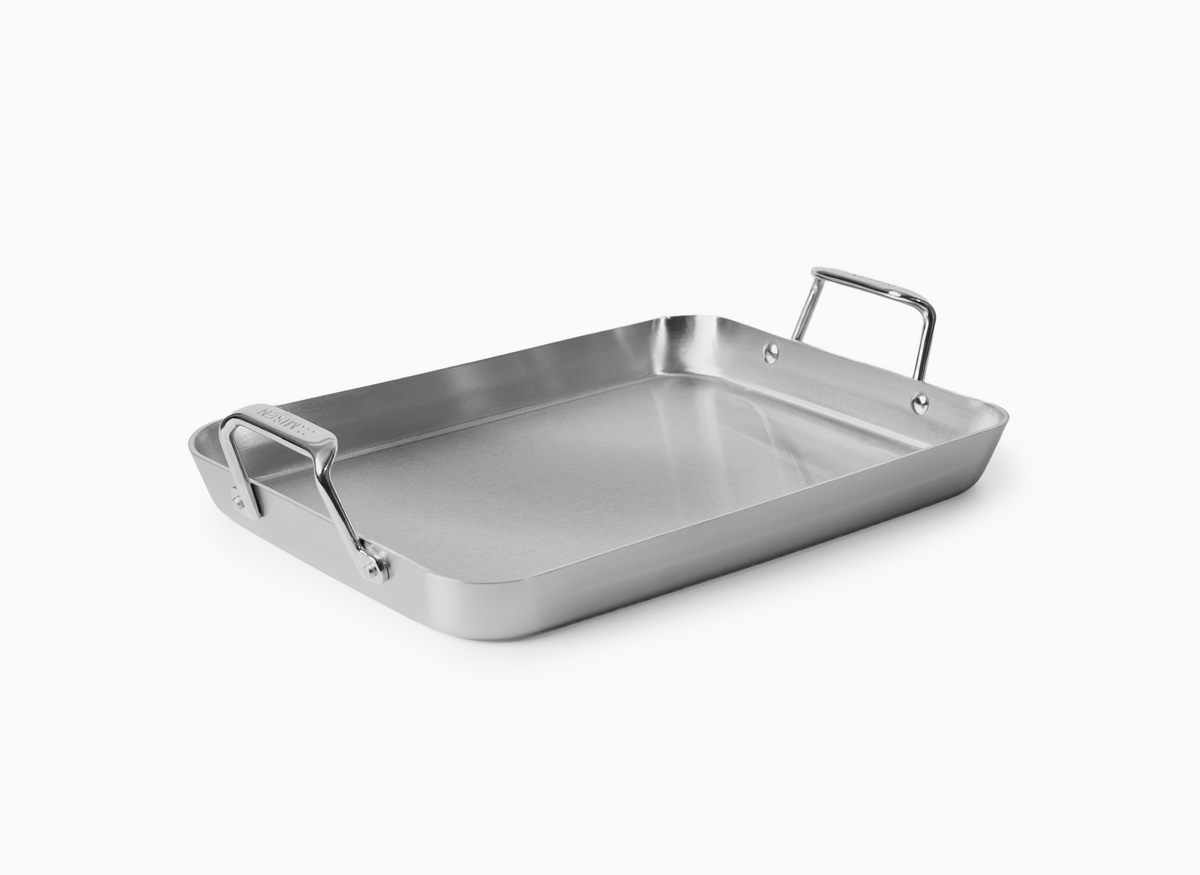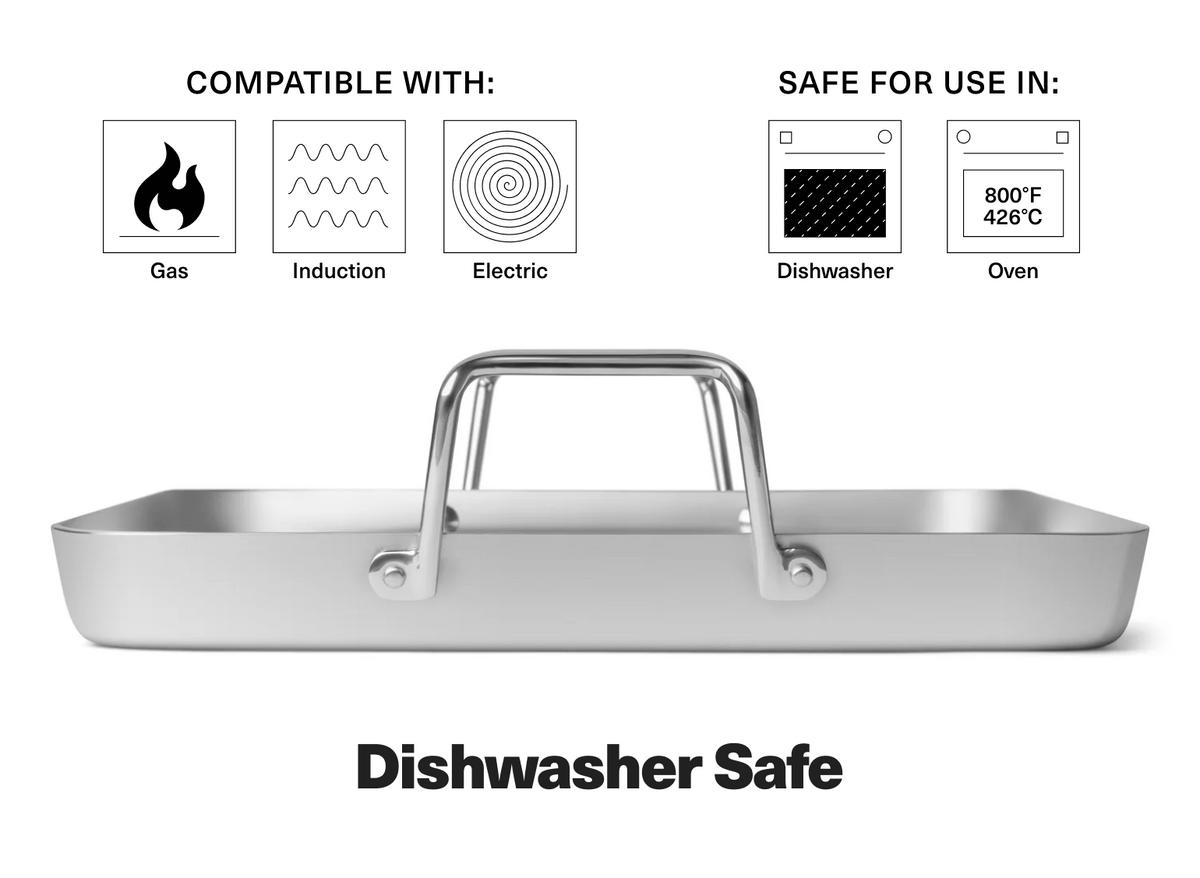How Long Do You Cook Boudin in the Oven? Oven-Baking Times Explained
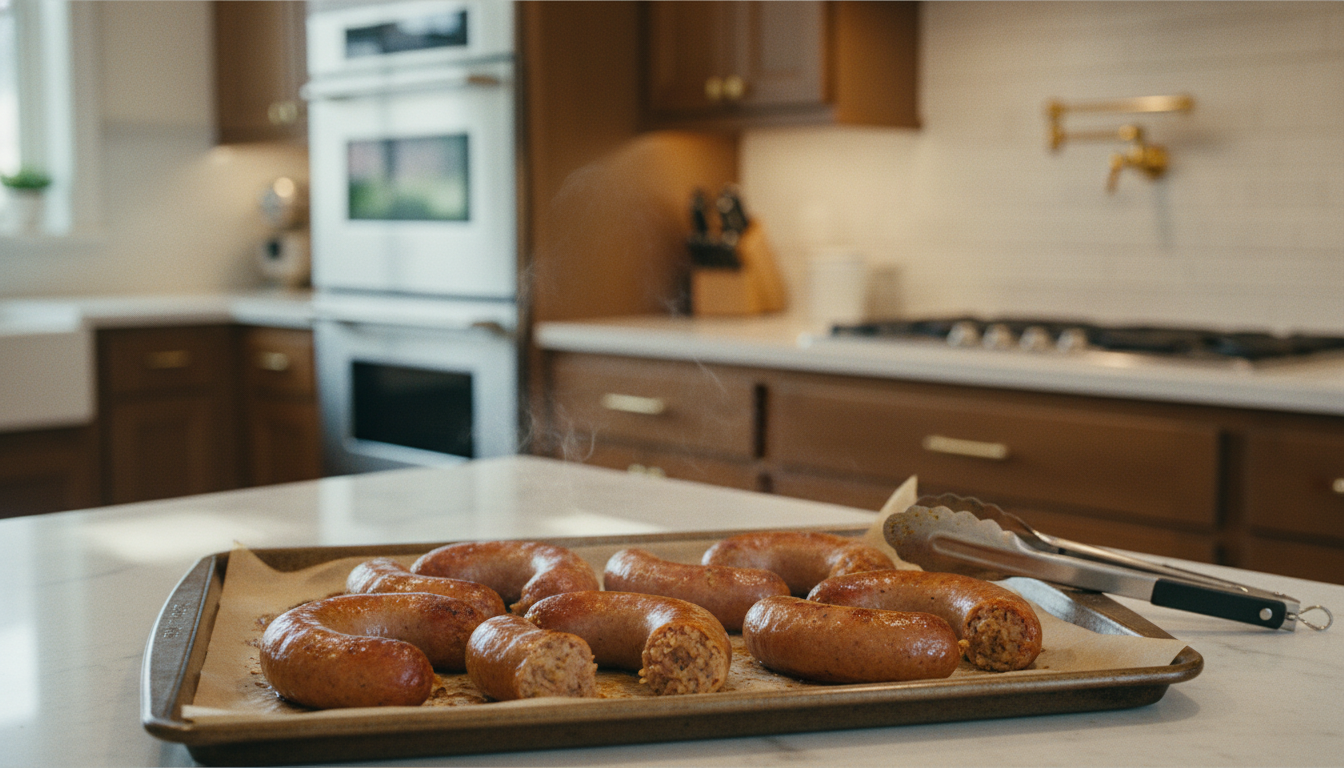
Mastering oven-baked boudin is simpler than you think: choose 300 °F for gentle, even cooking or 425 °F for a faster, crackling casing, then bake fresh links 20 min (or frozen 30 min) until every piece hits 165 °F for safety. Space the links on a lightly-oiled rimmed sheet, turn once or twice, and finish with a 1-2 min broil for shatter-crisp skin that protects the moist pork-and-rice filling inside. Along the way you’ll learn why a quick oil mist beats butter, how convection speeds browning, and the toothpick-vent trick that stops casings from bursting, plus smart make-ahead options like seafood boudin, cheese-stuffed appetizers, and freezer storage that keeps leftovers ready for steam-or-air-fry reheats. With these Cajun-country techniques, weeknight meals and party platters move from gas-station staple to golden, flavor-packed crowd-pleasers without constant tending or messy cleanup.
Understanding Boudin and Oven Cooking Basics
Oven-baking boudin at 165°F delivers a crowd-pleasing, crispy-outside-moist-inside Cajun sausage with zero hot-spot guesswork and almost no cleanup.
What Is Boudin?
Boudin is a distinctive Cajun sausage stuffed with a flavorful mixture of pork, liver, rice, and aromatic seasonings. This regional staple combines finely diced cooked pork, liver, rice, bell pepper, celery, green onions, parsley and cayenne pepper [1]. Unlike traditional smoked sausages, boudin is typically poached, giving it a moist, squeezable texture that defines its eating experience - many enthusiasts squeeze the filling directly from the casing while discarding the outer shell [1].
While boudin has French origins (the term appears in several French-speaking cultures [2]), the Cajun version with rice has become emblematic of Louisiana and East Texas cuisine. It's predominantly found at gas stations, meat markets and grocery stores throughout the region rather than sit-down restaurants [1]. The sausage inspires fierce local pride, with towns like Scott ("Boudin Capital of the World"), Jennings ("Boudin Capital of the Universe"), and Broussard competing for boudin-related titles [2].
Variations include seafood boudin made with crawfish, crab, or shrimp instead of pork [3].
Why Oven Baking Works for Sausage
When you're cooking boudin, your oven becomes your most reliable partner. This method gives you even heat distribution, eliminating those frustrating hot spots that leave some parts overcooked while others stay underdone [5]. Unlike grilling or pan-searing where you're constantly turning and monitoring, oven baking lets you set it and step away [6]. Just arrange your boudin links in a single layer on a lightly oiled baking sheet and let the consistent heat work its magic [4].
Your oven ensures boudin reaches the critical 165°F internal temperature throughout each link [5]. This controlled environment creates that perfect contrast—a crispy, golden exterior while keeping the rice-meat filling moist and flavorful [4]. Need to feed a crowd? No problem.
You can bake multiple links on a single sheet pan without sacrificing quality [6]. Plus, cleanup is simple—use parchment paper or a light oil coating on your baking sheet to prevent sticking [6]. Want extra browning? Switch to broil for the final 1-2 minutes to achieve restaurant-quality color and texture [6].
Key Safety Considerations
Getting boudin to the right temperature isn't just about taste—it's about keeping you safe. This pork-based sausage needs to hit 165°F internally to eliminate harmful bacteria. Don't guess or judge by color alone.
Insert your food thermometer into the thickest part of each link to verify the temperature [7]. Yes, check every link when cooking multiple pieces—heat distribution can vary even in the same pan. After cooking, let your boudin rest for a minute or two.
This brief pause allows the innermost parts and juices to finish cooking through residual heat [7]. Store raw boudin away from other foods in your refrigerator, and always clean any surface or utensil that touched uncooked sausage. These simple steps prevent cross-contamination and ensure your meal is both delicious and safe.
Essential Tools for Oven Cooking
You don't need fancy equipment to nail oven-baked boudin, just the right basics.
Determining the Right Oven Temperature
Choose your boudin’s destiny: 300°F for lusciously even, split-proof links or 425°F for a lightning-fast, crackling “flavor bomb” that still hits the mandatory 165°F inside.
Recommended Temperature Range
Finding the right oven temperature for boudin is simpler than you might think. You've got two main options: low and slow at 300°F, or hot and fast at 425°F. Both work beautifully—it just depends on what you're after.
Lower temperatures (300-350°F) give you more control and reduce the chance of those casings splitting open. The heat penetrates gently, letting those Cajun flavors really develop. Higher temperatures (400-425°F) deliver that irresistible crispy skin faster, perfect when you're short on time.
Whatever temperature you choose, your boudin needs to hit 165°F internally to be safe to eat [10] [4]. Think about your schedule and how crispy you want that casing—patient cooks get rewarded with perfectly even results, while the hot-and-fast method gives you amazing textural contrast.
How Temperature Shapes Texture
Temperature is everything when it comes to boudin texture. At lower temperatures (around 300°F), you get gentle, even heating that keeps every bite moist and tender [11]. The heat works its way slowly through that rice-and-pork filling, creating consistent texture throughout.
Crank it up to 425°F, and you're in crispy casing territory—the outside gets beautifully golden while the inside stays soft and steamy [4]. That contrast is what makes boudin so special. Higher heat delivers what one chef perfectly describes as "texturally wonderful" with a "flavor bomb" tucked inside that crisp shell [4].
Just remember, no matter which route you take, that internal temperature needs to reach 165°F for safety while keeping the filling perfectly steamy [11].
Adjusting for Frozen vs Thawed Boudin
Frozen boudin needs extra care but cooks up just as delicious as fresh. Give frozen links about 30 minutes at 400°F, compared to just 10-15 minutes for thawed boudin at 425°F [4]. Here's a pro tip: bake frozen links for about 10 minutes first, just until you can gently separate them. Then spread them out with space between each link to finish cooking [13].
Be patient—those frozen casings are delicate, so don't force them apart [12]. Want restaurant-quality results from frozen? Try the two-step method: boil first to thaw, then pop them in the oven for that crispy finish [13]. This trick prevents the dreaded burnt-outside, cold-inside situation.
Whether starting frozen or fresh, make sure your boudin hits 165°F internally [4]. If you've got time to plan ahead, thawing overnight in the fridge gives you the most consistent results.
Energy‑Efficient Heating Tips
Smart cooking saves energy and gives you better boudin. Fill your baking sheet with links in a single layer—you'll use the same energy whether you're cooking two or ten [14]. When you're not rushing, go with 300°F instead of 425°F. You'll use less energy and get more even results [11].
Stick to the middle rack where your oven's heat is most consistent, so you won't need extra cooking time to compensate for hot spots [14]. Here's a clever trick: microwave your boudin for 2-3 minutes per side first, then finish in the oven just for crisping. This combo method slashes your energy use [11]. Got other dishes to cook?
Plan them together at similar temperatures to make the most of that preheated oven. And resist the urge to peek—every time you open that door, the temperature drops 25-50 degrees and your oven has to work harder to heat back up [14].
Step-By-Step Guide: How Long Do You Cook Boudin in the Oven
Space your oiled boudin links on a rimmed sheet, bake fresh at 300°F for 20 minutes—turning every 5 minutes—or thaw frozen links first and give them 30 minutes at 400°F for a crisp, juicy bite.
Preheat and Prep the Baking Sheet
Start by preheating your oven to your chosen temperature (as detailed in the temperature section above). While the oven heats, prepare your baking sheet for optimal results. A quality [roasting pan](https://misen.
com/products/roasting-pan) or rimmed baking sheet works perfectly—just coat it lightly with oil to prevent sticking and promote even browning [11]. The key is spacing your boudin links apart for proper air circulation [15]. This prevents steaming and ensures that coveted crispy exterior.
Pro tip: While parchment paper makes cleanup easier, direct contact with the oiled pan delivers the most evenly browned results.
Cooking Time for Fresh Boudin Links
Fresh boudin requires just 20 minutes when baking at 300°F. Place your prepared links on the oiled baking sheet and set your timer. Here's the simple process: turn the links every 5 minutes for even browning [11].
This regular rotation prevents sticking while creating that perfect contrast between crispy casing and moist filling. Once done (verify with your thermometer as discussed in safety considerations above), let the links rest for 1-2 minutes. This brief pause allows juices to redistribute, preventing the rice-meat mixture from spilling out when you slice [11].
Serve whole for a main course or cut into 1-2 inch rounds for appetizers.
Cooking Time for Frozen Boudin Links
Cooking frozen boudin? Plan for about 30 minutes at 400°F [16]. Start by baking for 10 minutes until the links can separate naturally—forcing them apart risks tearing the delicate casings [16].
Once separated, arrange them with space between each link and continue cooking. For best results, try this two-step approach: briefly boil frozen links until thawed, then transfer to the oven for browning. This prevents those frustrating burnt-outside, cold-inside results [16].
Remember to lightly oil your baking sheet, as frozen boudin releases extra moisture while cooking [16]. See the temperature adjustment section above for more details on frozen versus thawed cooking techniques.
Checking Doneness with a Thermometer
Your thermometer is the key to perfect boudin every time. Insert it into the thickest part of each link, avoiding contact with the baking sheet for accurate readings [4].
Check multiple spots on larger links since thinner sections cook faster. This quick verification prevents both safety risks from undercooking and texture issues from overcooking [18].
Once boudin hits the target temperature (see safety considerations above), remove it immediately—residual heat continues the cooking process briefly. When baking both frozen and fresh links together, check each one individually as their cooking times differ significantly [18].
Achieving a Perfect Crispy Skin
A whisper-thin veil of avocado-oil mist, 425°F heat, and a single, gentle flip halfway through are all you need to turn boudin casings into shatter-crisp shells that stay true to their Cajun soul.
Light Oil Spray vs Butter Coating
Getting that perfect crispy casing starts with the right coating. A light mist of oil spray creates an even layer that helps boudin brown beautifully without masking those distinctive Cajun flavors. Avocado oil spray handles high heat like a champ—ideal for boudin's 425°F cooking temperature [4]. No spray bottle?
No problem. Just drizzle a bit of oil on your baking sheet and spread it around before arranging the links [4]. Here's the key: less is more. When brushing oil directly on boudin, go light—too much oil pools in the pan, creates smoke, and actually prevents that crispy texture you're after [19].
The thin coating does double duty, keeping casings from sticking while helping develop that satisfying crunch [19]. Skip the butter here—oil's neutral flavor lets those authentic seasonings shine through [4]. Remember to space your links apart on the sheet for proper air circulation and even browning [19].
Flipping Halfway for Even Browning
Creating even browning doesn't always require constant flipping. For a hands-off approach that's perfect for beginners, try this: rub boudin links with olive oil, arrange them on a foil-lined baking sheet, and let them bake undisturbed at 275°F for about an hour [20]. This gentle method develops a naturally crispy, beautifully browned casing without any fuss.
That said, if you're working with thicker links or cooking at higher temperatures, one flip halfway through does the trick. This simple turn ensures both sides get their fair share of heat and color. When you do flip, handle those links with care—grab your tongs (never pierce!
) to keep all that flavorful filling right where it belongs. Once they're done, give them a quick rest before slicing into neat 1-inch rounds [20].
Convection vs Conventional Oven Effects
If you're lucky enough to have a convection oven, you're in for a treat. That built-in fan circulates hot air around your boudin, creating incredibly even browning and cooking everything about 25% faster [21]. Just remember to adjust your temperature down by 25°F—so if a recipe says 400°F for a regular oven, dial it back to 375°F with convection [21].
The magic of convection? It delivers that perfect crispy-outside, moist-inside texture that makes great boudin irresistible [22]. Use a rimmed baking sheet that allows air to flow freely around each link [21].
Regular ovens work just fine too—you'll just need to flip your boudin more often to compensate for uneven heat [23]. Convection really shines when you're cooking multiple batches for a crowd, browning everything evenly without constant pan shuffling [21]. Pro tip: start checking for doneness earlier than usual, as that efficient air circulation can take boudin from perfect to overcooked surprisingly fast [21].
Optional Broil Finish for Extra Crunch
Want to take your boudin's crispiness to the next level? Here's a game-changing finishing move: once your links hit that safe 160°F internal temperature, flip on the broiler for just 1-2 minutes [24]. This blast of high heat creates an incredible crackling crust that regular baking simply can't match. This technique transforms boudin from good to exceptional, building on the traditional crispy-brown exterior [20] with an extra layer of crunch.
That contrast between the shatteringly crisp casing and the tender rice filling inside? It's what wins over even the boudin skeptics [20]. Keep those long-handled tongs handy for any last-minute adjustments—you want to preserve that perfect texture balance without splitting the casings [25]. Fair warning: this final step requires your full attention.
Boudin's rich fat content means it can go from golden perfection to burnt in seconds under the broiler. Stay close, watch carefully, and get ready for some seriously crispy results that beat those pale, poached versions every time [20].
Flavor Boosters and Creative Variations
Transform humble boudin into show-stopping dishes—whether oven-baking with a light Cajun rub, stuffing jalapeños with boudin and cheese, or whipping up a spicy Cajun dip—by layering strategic seasonings and creative mix-ins that amplify rather than mask its signature flavor.
Adding Marinades or Spice Rubs
Transform boudin's flavor with strategic seasoning. Traditional boudin marinates for 1 hour to overnight before cooking [26], creating its signature taste foundation. For oven-baked boudin, apply external seasonings just before cooking. Keep it simple: Cajun seasonings naturally complement boudin's profile.
Try garlic powder, smoked paprika, or ground thyme for depth without overwhelming the sausage. Want more heat? Increase cayenne to 1½ teaspoons [26]. For adventurous variations, add jalapeños or incorporate seafood like shrimp or crawfish [1].
Apply rubs lightly—boudin casings already pack substantial seasoning. Too much spice overpowers rather than enhances. Brush links with oil first to help seasonings stick and promote crispy exteriors during baking.
Baking with Veggies or Beans
Create complete one-pan meals by pairing boudin with vegetables.
Incorporating Cheese or Toppings
Turn boudin into crowd-pleasing appetizers with cheese. Remove filling from casings and mix with cream cheese, sour cream, cheddar, and pepper jack. Bake at 350°F for 30 minutes until bubbly, then crown with crispy bacon and green onions [30][31].
Serve this dip with toasted baguettes or crackers. More creative options: - Stuff jalapeño halves with boudin, top with cheese, bake until golden [32] - Fill mushroom caps with boudin, add breadcrumbs and cheese [32] - Split bell peppers, stuff with boudin-cheese mixture for a hearty meal [32] For regular links, sprinkle cheese during the final baking minutes. Let it melt, then garnish with crumbled cracklings for texture [30].
These variations maintain boudin's Cajun soul while adding irresistible appeal.
Quick Reheating Leftover Boudin
For comprehensive reheating methods that preserve boudin's texture and flavor, see "Reheating Without Drying Out" in the next section.
Whether you prefer steaming, air frying, or grilling, proper reheating transforms leftovers back to their original quality.
Storing and Reusing Cooked Boudin
Cool, freeze, and reheat your boudin like a pro—steam chilled links for 10 minutes, freeze vacuum-sealed portions for up to two months, and never let them sit in the 40–140°F danger zone—to lock in Cajun flavor and keep every bite safe.
Cooling and Refrigeration Best Practices
Cool boudin properly to prevent bacterial growth and maintain quality. Spread links in a single layer—never stack them while hot. For commercial production, FSIS recommends stuffing boudin filling into casings at or above 158°F when possible [37]. If stuffing below this temperature, keep filling above 130°F throughout the process [37].
Refrigerate boudin promptly after cooking. The danger zone between 40°F and 140°F promotes rapid bacterial growth. Store cooked boudin at or below 40°F and use within 3-4 days [35]. Use sealed containers or tight wrapping to prevent cross-contamination and moisture loss.
Never leave cooked boudin at room temperature beyond 2 hours (1 hour if over 90°F) [36]. Commercial kitchens should follow FSIS stabilization protocols for precise cooling guidelines [37].
Freezing Cooked Boudin for Later Use
Freeze cooked boudin properly for convenient future meals. Cool completely to room temperature first—this prevents condensation and freezer burn [38]. Vacuum-sealed packages freeze perfectly as is [38]. For other packaging, wrap individual links in plastic wrap, then place in freezer bags with air removed or airtight containers [38].
Pre-freeze unwrapped links on a parchment-lined sheet for 1-2 hours to prevent sticking—this lets you grab single portions easily [39]. Label everything with contents, date, and cooked status [39]. Place packages against freezer walls initially for fastest freezing, then move after 24 hours [39]. Cooked boudin maintains quality for 1-2 months frozen [38][40].
It's safe beyond this time but flavor and texture decline [38]. Keep raw and cooked boudin in separate containers [39]. Always thaw in the refrigerator, not at room temperature [38].
Reheating Without Drying Out
Reheat leftover boudin properly to restore its original quality. Steaming works best—place links in a steamer basket over an inch of boiling water (not touching the links) for 10 minutes [33]. This preserves moisture and flavor perfectly. For consistently moist results, boil uncut links until the casing bounces back when squeezed—about 10-12 minutes.
Check that internal temperature reaches 165°F [33]. Want crispy skin with juicy filling? Air fry at 350°F for 8 minutes, flipping halfway through. Rest 2 minutes before serving.
A light oil spray beforehand adds extra crispiness [33]. Oven reheating at 325°F also works well.
Repurposing Ideas: Omelets, Salads, Sandwiches
Transform leftover boudin into creative new meals. While boudin rarely lasts long in Cajun households, any remaining links make excellent ingredients [42]. Create a breakfast sandwich by placing flattened boudin between fresh biscuits with a fried egg. Press the boudin slightly for better bite consistency [43].
For lunch, make boudin grilled cheese—layer the meat between bread with your favorite melting cheese [42]. Remove boudin from its casing to incorporate into omelets, salads, or hash. The spiced pork and rice mixture adds instant flavor to any dish. Boudin pairs perfectly with fluffy biscuits and eggs for hearty breakfasts [43].
For entertaining, prep components ahead and let guests build their own sandwiches. Offer hot sauce, cheese, and other toppings for customization [43].
Troubleshooting Common Oven Boudin Issues
Poke two or three toothpick holes in each boudin link, bake at 300°F while turning every 5 minutes, and you’ll dodge burst casings, uneven browning, and under-done centers for perfectly crisp-moist results.
Preventing Burst Casings
Here's the key to keeping your boudin intact: poke 2-3 small holes per link at 1-inch intervals with a toothpick before baking. This simple step lets steam escape as the rice filling expands during cooking [44]. Without these vents, pressure builds up and—pop!
—you've got a messy situation [44]. Place links on your lightly-oiled baking sheet and gently turn them every 5 minutes with long-handled tongs (quality stainless steel tongs won't puncture delicate casings). Keep your oven at a moderate 300°F for gradual, controlled heating that prevents rapid pressure buildup [11].
With proper venting and gentle handling, you'll achieve that perfect crispy-outside, moist-inside texture every time.
Fixing Uneven Browning
Getting even browning on boudin can be tricky, but these fixes will help. First, always preheat your oven completely—starting with a cold oven creates uneven heat that browns the tops while leaving bottoms pale [45]. Your choice of bakeware matters too: darker pans absorb more heat for deeper browning, while lighter, shinier pans create gentler browning [45].
If you're getting burnt tops with undercooked bottoms, simply move your oven rack down one position to balance the heat [45]. Since boudin naturally curves, only parts touch the pan—that's why gentle repositioning every 5-7 minutes helps achieve all-around browning. Use tongs to rotate links so different sides get pan contact.
For serious boudin enthusiasts, specialty curved sausage pans cradle each link for perfectly even results [46].
What to Do If Undercooked
Don't panic if your boudin's undercooked—here's how to save it. If your thermometer reads below 160°F, pop those links back in the oven right away [47]. Continue at 300°F in 5-minute intervals, checking temperature and flipping links each time for even cooking.
While properly cooked boudin feels firm when pressed and looks slightly darker [47], never trust appearance alone—always verify with your thermometer. For stubborn cold spots (especially common with frozen boudin), try this chef's trick: briefly simmer the undercooked links in water until they hit temperature, then return them to the oven for 3-5 minutes to crisp up again [47]. This prevents those frustrating burnt-outside, cold-inside disasters.
Need a super quick fix? Wrap links in damp paper towels and microwave for 60-90 seconds, then double-check that temperature [47].
Cleaning Oven Residue Safely
Boudin's rich fat content can leave your oven looking less than pristine—but cleanup doesn't have to be a nightmare. Start by removing oven racks and soaking them overnight in hot, soapy water to dissolve that baked-on grease [49]. For the oven interior, skip harsh chemicals that can damage surfaces.
Instead, make a simple paste with baking soda and water, spread it over greasy spots, and let it work overnight before wiping clean [49]. This natural method tackles boudin's characteristic splatters beautifully. If you're a regular boudin baker, give your oven a thorough cleaning every 2-3 months to prevent buildup [49].
For really stubborn grease, commercial oven cleaners work but need good ventilation during use [49]. Pro tip: always let your oven cool completely before cleaning, and rinse thoroughly to prevent any cleaning residue from affecting your next batch of perfectly crispy boudin.
Bake boudin at 300°F for 20 min or 425°F for 10–15 min until 165°F internal.
- Bake boudin at 300°F for 20 min or 425°F for 10–15 min until 165°F internal.
- Poke 2–3 toothpick holes per link before baking to stop casings bursting.
- Flip links every 5 min for even browning; broil 1–2 min at end for crisp skin.
- Cook frozen boudin 30 min at 400°F; boil first to thaw, then oven-crisp.
- Steam leftover links 10 min or air-fry 8 min at 350°F to reheat without drying.
- Store cooked boudin ≤40°F and use within 3–4 days; freeze up to 2 months.
- Check internal temp in thickest part of every link; never judge doneness by color.
- https://www.homesicktexan.com/boudin-recipe-boudain/
- https://en.wikipedia.org/wiki/Boudin
- https://acadianatable.com/2023/01/02/the-great-boudin-debate/
- https://www.thespeckledpalate.com/boudin-101/
- https://informe.aysa.com.ar/best-way-to-cook-boudin/
- https://wearenotfoodies.com/oven-baking-sausage-quick-easy-and-minimal-mess/
- https://www.foodsafety.gov/food-safety-charts/safe-minimum-internal-temperatures
- https://www.dioro.com/blogs/news/how-to-cook-boudin-sausage?srsltid=AfmBOoqzlMkzPszCiK1-HeHJpZsIfYBUOTrQxTCsHNTe2HaRJeZQzAk9
- https://www.debuyer-usa.com/blogs/news/essential-baking-tools-your-kitchen-should-have?srsltid=AfmBOoqaUgn_YVyt6dEqtkyeFL888yeTGCX6zUts2hGIZYIYv6JUxDre
- https://creole.net/blog/the-best-ways-to-cook-boudin-at-home-and-how-its-made/?srsltid=AfmBOoqBhiwEvUBLIH9SsD7KKNkStTSezhzDlDPHBpQzreX-nweN5IdA
- https://cajunoriginal.com/cooking-tips/boudin-tips/
- https://forums.egullet.org/topic/93338-boudin-question/
- https://discover.grasslandbeef.com/blog/how-to-cook-frozen-sausage/
- https://www.dioro.com/blogs/news/how-to-cook-boudin-sausage?srsltid=AfmBOop49zyQsHoBkuP8tTAsQdLSnwe7-LZvpxPvqz4AEBaiRZA7AcC4
- https://creole.net/blog/the-best-ways-to-cook-boudin-at-home-and-how-its-made/?srsltid=AfmBOorWO8H8YL3ykQhmXPtLeJK7OR7WobnhpNP-Ncx6hzmK30k1LjEh
- https://www.dioro.com/blogs/news/how-to-cook-boudin-sausage?srsltid=AfmBOorh7RNuVNDZB5lUVnrEWIt_VLqqlQAmkC575E9UCte1DSLsfXbH
- https://themeatstick.com/blogs/tips-recipes/the-basics-of-sausage-cooking-and-safety?srsltid=AfmBOorKA07lizKcLP5fgPE6DhPnK5wPrSTl-VoxrOwGGx7_U326OQi8
- https://www.lacrawfish.com/news/cajun-meats-for-grilling-guide
- https://www.dioro.com/blogs/news/how-to-cook-boudin-sausage?srsltid=AfmBOopaIG-HLU5mtMirUUFkd5j4o-_YDdG60Epw-o0bGj8bYcG1wHm8
- http://raisedonaroux.com/roasted-boudin/
- https://www.simplyrecipes.com/when-to-use-convection-setting-oven-11822788
- https://www.kitchenaid.com/pinch-of-help/major-appliances/convection-bake-vs-bake.html
- https://www.whirlpool.com/blog/kitchen/convection-roast-vs-convection-bake.html
- https://creole.net/blog/the-best-ways-to-cook-boudin-at-home-and-how-its-made/?srsltid=AfmBOooRR_d0F_LIYNWG7Hp3UkT7CKiiNLOZKOJK7xZySqkJ08srVXHy
- https://www.dioro.com/blogs/news/how-to-cook-boudin-sausage?srsltid=AfmBOorziGWSi3esg5S6-d7AzvBb2LeY2b6iu-mw5rwZi493v43Rpw7K
- https://www.epicurious.com/recipes/food/views/my-boudin-388369
- https://www.the-girl-who-ate-everything.com/sheet-pan-sausage-and-veggies/
- https://www.onceuponachef.com/recipes/sheet-pan-sausage-and-vegetables.html
- https://annajonesrd.com/2022/11/11/one-pan-roasted-veggies-and-sausage-my-familys-new-favorite/
- https://louisianawomanblog.com/2023/10/16/hot-cajun-boudin-dip-recipe/
- https://theonepotmomma.com/baked-boudin-dip/
- https://creole.net/blog/creative-boudin-recipes/?srsltid=AfmBOoonq6ZfvGlAG6MxLxjAABb8ICtdPBZ_tjNKjpQJ6NFFPsBjvVjn
- https://www.beststopinscott.com/no-such-thing-as-leftover-boudin/
- https://www.reddit.com/r/Acadiana/comments/4484iv/reheating_boudin/
- https://www.foodsafety.gov/food-safety-charts/cold-food-storage-charts
- https://extension.umn.edu/preserving-and-preparing/storage-times-food-refrigerator-and-freezer
- https://ask.usda.gov/s/article/askFSIS-Public-Q-A-Scientific-support-for-cooling-boudin-sausage-stuffed-in-raw-natural-casings
- https://www.usinger.com/sausage-handling
- https://gfreedeliciously.com/simple-hacks-on-how-to-store-and-freeze-raw-and-cooked-sausage-and-brats/
- http://www.fsis.usda.gov/food-safety/safe-food-handling-and-preparation/meat-catfish/sausages-and-food-safety
- https://www.teetsfoodstore.com/faqs.html?srsltid=AfmBOopk1qcysV6dayc4blPtudtZNYdvAFl_dXb3ulaxsyMiWjb5dXM2
- https://973thedawg.com/revealed-7-secret-uses-for-leftover-louisiana-boudin/
- https://www.thespeckledpalate.com/its-football-season-friday-boudin-breakfast-sandwiches/
- https://www.dioro.com/blogs/news/how-to-cook-boudin-sausage?srsltid=AfmBOophrde8Oq1Jap_PnYUTNvYrvU-vSu3qlAWZzP5FTrh_YoFMNU4X
- https://producthelp.kitchenaid.com/Cooking/Wall_Ovens_and_Ranges/Product_Info/Oven_Product_Assistance/How_to_Correct_Uneven_Baking_or_Browning
- https://www.hungryonion.org/t/evenly-browned-sausages/34754
- https://www.dioro.com/blogs/news/how-to-cook-boudin-sausage?srsltid=AfmBOoq2xoFZhK4jzVAMeXkkIfDYN4fFmVpOEfQw3fS8cYUb4dqpOxSG
- https://creole.net/blog/the-best-ways-to-cook-boudin-at-home-and-how-its-made/?srsltid=AfmBOop09Yicd4Mi4fcz9mHXLYwr5Ms98X8hrpZ9b5_k5QL6bIX7UH4R
- https://geauxmaids.com/how-often-easiest-way-clean-baked-grease-oven/
